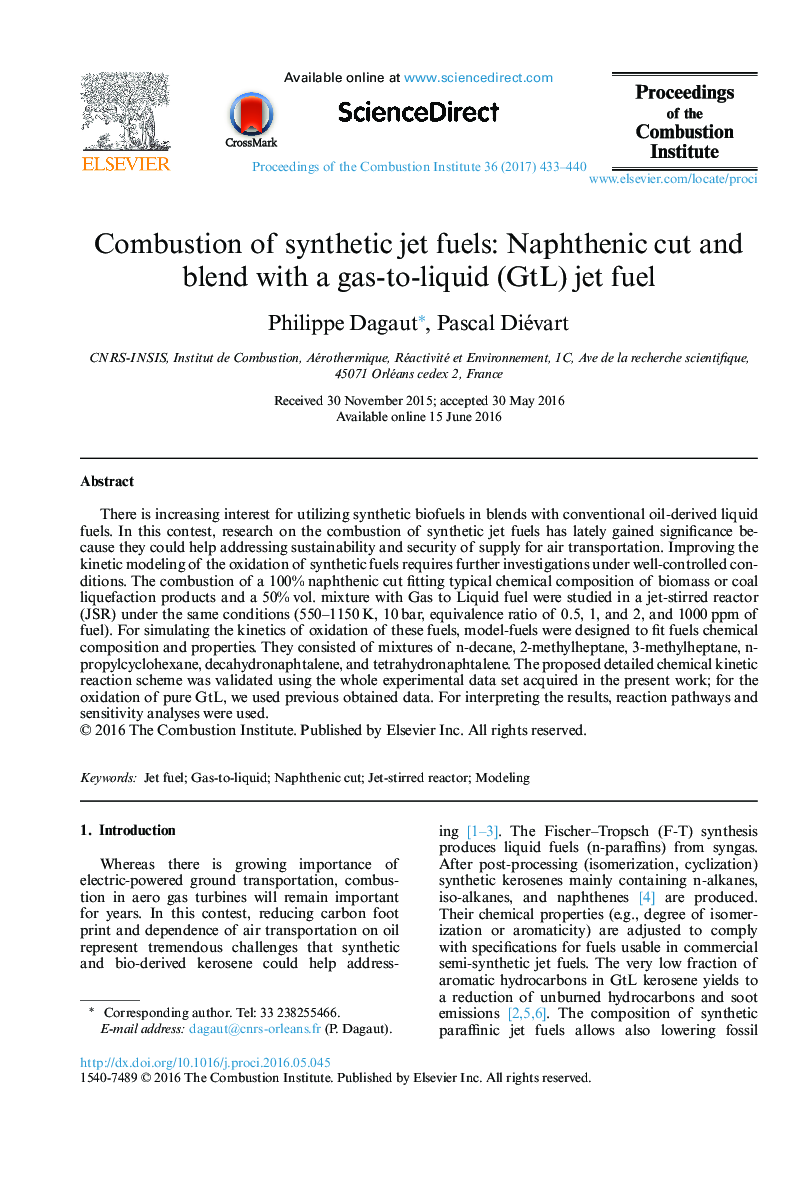| کد مقاله | کد نشریه | سال انتشار | مقاله انگلیسی | نسخه تمام متن |
|---|---|---|---|---|
| 6477936 | 1427917 | 2017 | 8 صفحه PDF | دانلود رایگان |
There is increasing interest for utilizing synthetic biofuels in blends with conventional oil-derived liquid fuels. In this contest, research on the combustion of synthetic jet fuels has lately gained significance because they could help addressing sustainability and security of supply for air transportation. Improving the kinetic modeling of the oxidation of synthetic fuels requires further investigations under well-controlled conditions. The combustion of a 100% naphthenic cut fitting typical chemical composition of biomass or coal liquefaction products and a 50%Â vol. mixture with Gas to Liquid fuel were studied in a jet-stirred reactor (JSR) under the same conditions (550-1150Â K, 10Â bar, equivalence ratio of 0.5, 1, and 2, and 1000Â ppm of fuel). For simulating the kinetics of oxidation of these fuels, model-fuels were designed to fit fuels chemical composition and properties. They consisted of mixtures of n-decane, 2-methylheptane, 3-methylheptane, n-propylcyclohexane, decahydronaphtalene, and tetrahydronaphtalene. The proposed detailed chemical kinetic reaction scheme was validated using the whole experimental data set acquired in the present work; for the oxidation of pure GtL, we used previous obtained data. For interpreting the results, reaction pathways and sensitivity analyses were used.
Journal: Proceedings of the Combustion Institute - Volume 36, Issue 1, 2017, Pages 433-440
